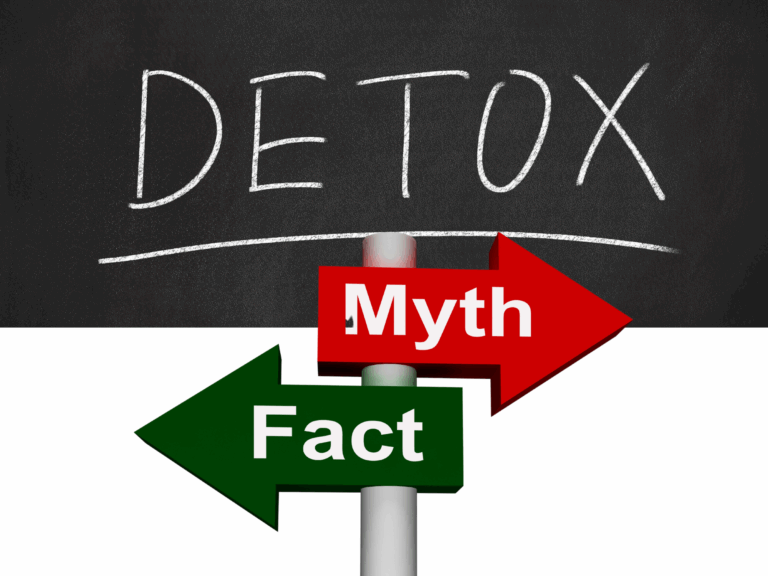Let’s face it: navigating the world of food allergies can feel like playing culinary roulette. One wrong ingredient and you’re out of the game with hives, wheezing, or worse. Whether you or someone in your family has food allergies, knowing the usual suspects (and the sneaky ones too) can make a huge difference. So let’s break it down—from what to watch for to how to eat with confidence, both at home and out on the town.
The Big 9: Common Food Allergens You Should Know
These are the most common allergens, responsible for the vast majority of food allergy reactions globally:
- Milk – Not just in your latte. Found in cheese, butter, yogurt, baked goods, and even processed meats.
- Eggs – Especially egg whites. Hide out in mayonnaise, some pasta, baked items, and even foam toppings.
- Peanuts – A major allergen; can sneak into sauces, snacks, and desserts.
- Tree Nuts – Almonds, cashews, walnuts, hazelnuts, pistachios, and more. Often found in nut milks, flours, and toppings.
- Fish – Tuna, salmon, cod, etc. Keep an eye out for fish sauces and soups.
- Shellfish – Shrimp, crab, lobster, and sometimes mollusks like clams or oysters.
- Wheat – Not just gluten-sensitive folks. Found in breads, cereals, soy sauce, and soups.
- Soy – Soybeans, tofu, soy lecithin, soy protein isolate… it’s everywhere.
- Sesame – Increasingly common, especially in tahini, hummus, bagels, and spice mixes.

The Sneaky & Less-Known Allergens
They might not make headlines, but they can pack a punch:
- Corn – Found in corn syrup, starch, cereals, snack foods, and even baking powder.
- Mustard – Common in dressings, spice blends, and condiments.
- Celery – Especially in soups, bouillon, and seasoning mixes.
- Lupin – Used in gluten-free flours; closely related to peanuts.
- Gelatin – Hidden in gummies, marshmallows, and even some medications.
- Red Meat (Alpha-gal syndrome) – A tick bite can trigger this bizarre meat allergy.
- Fruit & Vegetable Cross-Reactivity – Apples, carrots, melons can trigger reactions in folks with pollen allergies.
- Spices – Rare, but potent. Garlic, cumin, coriander, and cinnamon have all caused allergic reactions.
- Chocolate – True cocoa allergies are rare. Reactions usually stem from added ingredients.
- Avocado – Often linked to latex allergy in a cross-reactive phenomenon.
Most Susceptible Groups: Who’s at Greater Risk?
Food allergies can affect anyone, but certain groups are more vulnerable and need to take extra precautions:
1. Infants and Young Children
Their immune systems are still developing, making them more prone to food sensitivities and allergic reactions. Introducing allergenic foods should be done cautiously and in consultation with a pediatrician.
2. Pregnant and Breastfeeding Women
Although pregnancy doesn’t increase the risk of developing allergies, expectant mothers need to be extra cautious about exposure and nutritional intake. Some allergens can pass through breast milk.
3. Seniors
As we age, our immune systems can become less responsive. Seniors with allergies might also be managing multiple medications, increasing the risk of cross-reactions or overlooked ingredients.
4. People with Asthma or Eczema
There’s a known link between these conditions and food allergies. Individuals with a history of respiratory or skin sensitivities should be particularly alert.
5. Those with a Family History of Allergies
Genetics play a role—if close family members have food allergies, you or your child may be more likely to develop them too.
How to Stay Safe: Smart Eating at Home
Cooking at home can be your safest bet—if you take the right steps. Here’s how to make your kitchen a safe haven:
1. Label Reading Like a Pro
Get used to reading ingredient lists like you’re analyzing ancient runes. Watch for alternate names (e.g., casein for milk, albumin for eggs) and allergen disclaimers like “may contain” or “processed in a facility that also handles…”
2. Designated Allergy-Free Zones
Set aside specific areas in the kitchen for allergy-safe prep. Have color-coded cutting boards, separate utensils, and even dedicated appliances if possible. This reduces the risk of cross-contact.
3. Stock Allergy-Safe Staples
Keep go-to ingredients and snacks that are certified allergen-free. It’s also smart to have backups in the pantry for those moments when cooking from scratch isn’t possible.
4. Get the Whole Household On Board
Food safety is a team sport. Everyone in the house—kids included—should know which ingredients are off-limits and how to check labels.
5. Batch Cook & Freeze
Prepare large batches of allergy-friendly meals and freeze them in portions. This is especially helpful for school lunches, late nights, or travel days.
6. Avoid Bulk Bins and Shared Utensils
Bulk bins at stores are convenient—but they’re often a contamination nightmare. Opt for sealed packages with clear allergen labeling.
7. Use Apps and Tools
Several apps let you scan product barcodes to check for allergens. Also, keep a kitchen binder or digital file with trusted recipes and allergen-safe brands.
Eating Out Without the Drama
Navigating restaurants with a food allergy can feel like you’re preparing for battle—but with the right steps, you can dine out with confidence (and enjoy your meal too).
1. Call Ahead
Before making a reservation, call the restaurant and ask if they can accommodate your allergy. Ask specific questions like:
- Do you have a dedicated allergen menu?
- Are your kitchen staff trained in preventing cross-contamination?
- Do you use shared fryers, cutting boards, or grills?
Some restaurants even allow you to speak directly to the chef, which is gold.
2. Be Upfront With Staff
As soon as you arrive, tell your server about your allergy. Don’t downplay it—be clear and specific. For example, say “I have a severe allergy to peanuts and can’t have any cross-contact” rather than just “no peanuts.” Reinforce the seriousness of the allergy without causing panic.
3. Ask About Preparation Methods
Even if a dish seems safe, ask how it’s made. A salad might seem harmless until you find out the dressing contains mustard or the croutons have sesame seeds. Questions to ask:
- Is this sauce made in-house?
- Is there any flour dusting used on grilled items?
- Are garnishes or toppings pre-mixed?
4. Avoid High-Risk Foods
Some menu items are simply too risky:
- Buffets and salad bars – Cross-contamination central.
- Baked goods – Ingredients aren’t always listed, and nuts, dairy, or eggs are common.
- Sauces and soups – Often contain hidden allergens like flour, dairy, soy, or nuts.
- Fried foods – Might be cooked in oil that’s shared with allergenic items.
5. Carry Backup
Your allergy toolkit should always be by your side: an epinephrine auto-injector, antihistamines, and a medical ID bracelet if needed. Even the most careful preparation can go sideways—so be ready.
6. Use Allergy Cards
A simple, wallet-sized allergy card can go a long way, especially if you’re traveling or dining somewhere noisy. You can make your own or download templates online that list your allergens clearly, sometimes in multiple languages.
7. Look for Allergy-Friendly Chains
Some restaurants have built their reputation around allergy safety (e.g., Chipotle, MOD Pizza, or Disney properties). While not perfect, they often have strict protocols and allergen menus available on request or online.
8. Trust Your Gut (Not Just Your Stomach)
If something feels off—too vague a description, a dismissive waiter, or a sketchy buffet—don’t eat it. No meal is worth the risk of an allergic reaction.
Bonus Tips: For Parents & Caregivers
Raising a child with food allergies can feel like being a part-time detective, nutritionist, and bodyguard all rolled into one. But with some planning and open communication, you can help your child stay safe and empowered.
- Educate, don’t scare your kids about allergies. Teach them what their allergens look like, how to say “I’m allergic to ___,” and how to politely refuse food if they’re unsure. Roleplay common scenarios so they feel confident speaking up.
- Label everything when packing school lunches, especially for younger children. Use stickers, notes, or special containers that clearly signal “safe to eat.”
- Schools & playdates: Always notify teachers, babysitters, and other parents about your child’s allergies. Provide a list of safe snacks and treats, and leave behind emergency medication and action plans when your child is in someone else’s care.
- Build an allergy-safe routine: Help your child get used to washing hands before and after meals, avoiding food sharing, and carrying their epinephrine if prescribed. Turn it into a habit rather than a restriction.
- Medical bracelets or tags: Especially for young kids or non-verbal children. These can quickly inform caregivers or first responders in emergencies.
- Birthday parties & social events: Pack an allergen-free treat so your child doesn’t feel left out. Talk to the host in advance and offer to bring something safe that all the kids can enjoy.
- Connect with other allergy parents: Whether online or in your local community, support networks are invaluable for sharing safe products, recipes, and emotional encouragement.
- Keep communication open: As your child grows, involve them in reading labels, choosing snacks, and preparing meals. This builds confidence and helps them take ownership of their own health.
Final Bite
Food allergies can be stressful, but they don’t have to rule your life. A little knowledge, some prep, and open communication can keep meals safe and enjoyable. Whether you’re navigating peanut-free snacks or decoding menus in a new city, just remember: you’ve got this.
Now, we’d love to hear from you! Do you have a food allergy story, a tip that’s worked wonders, or a favorite allergy-safe recipe? Share your experience in the comments—your insight might just help someone else on their allergy journey.
Have a question or want to add to the conversation? Jump in below—we’re all in this together. 🍽️✨Food allergies can be stressful, but they don’t have to rule your life. A little knowledge, some prep, and open communication can keep meals safe and enjoyable. Whether you’re navigating peanut-free snacks or decoding menus in a new city, just remember: you’ve got this.
And hey, if you ever feel overwhelmed, just know you’re not alone in this food adventure. Now go forth and eat safely—and deliciously!





